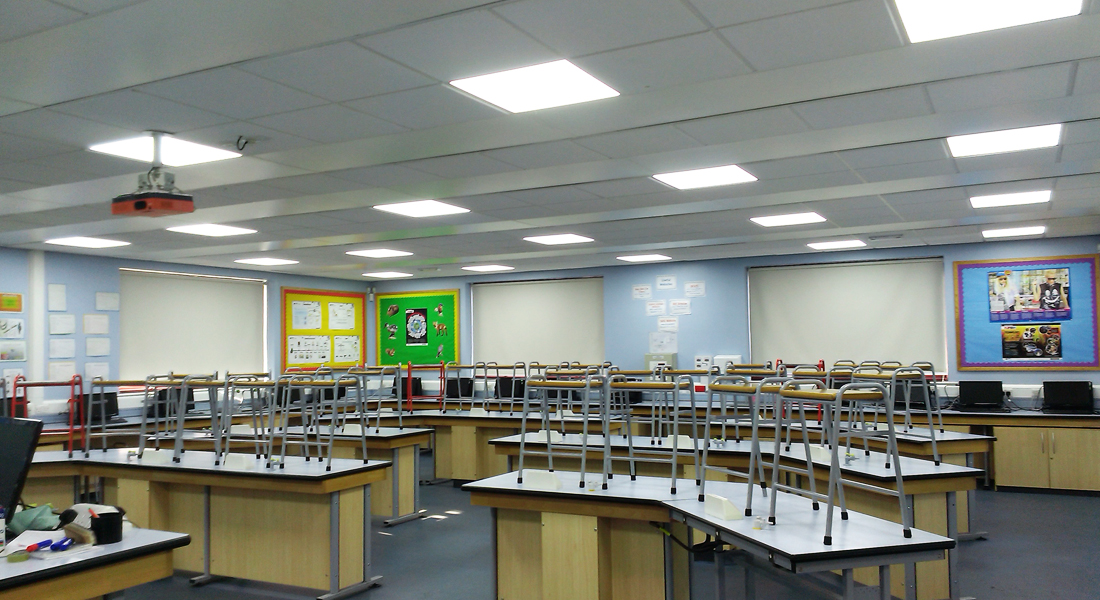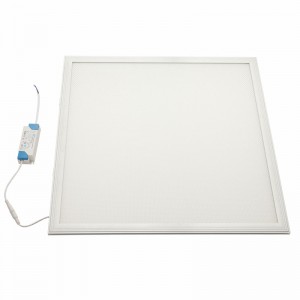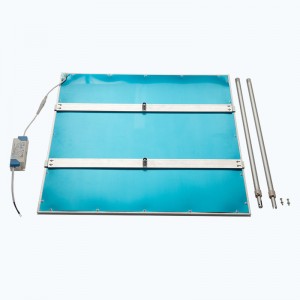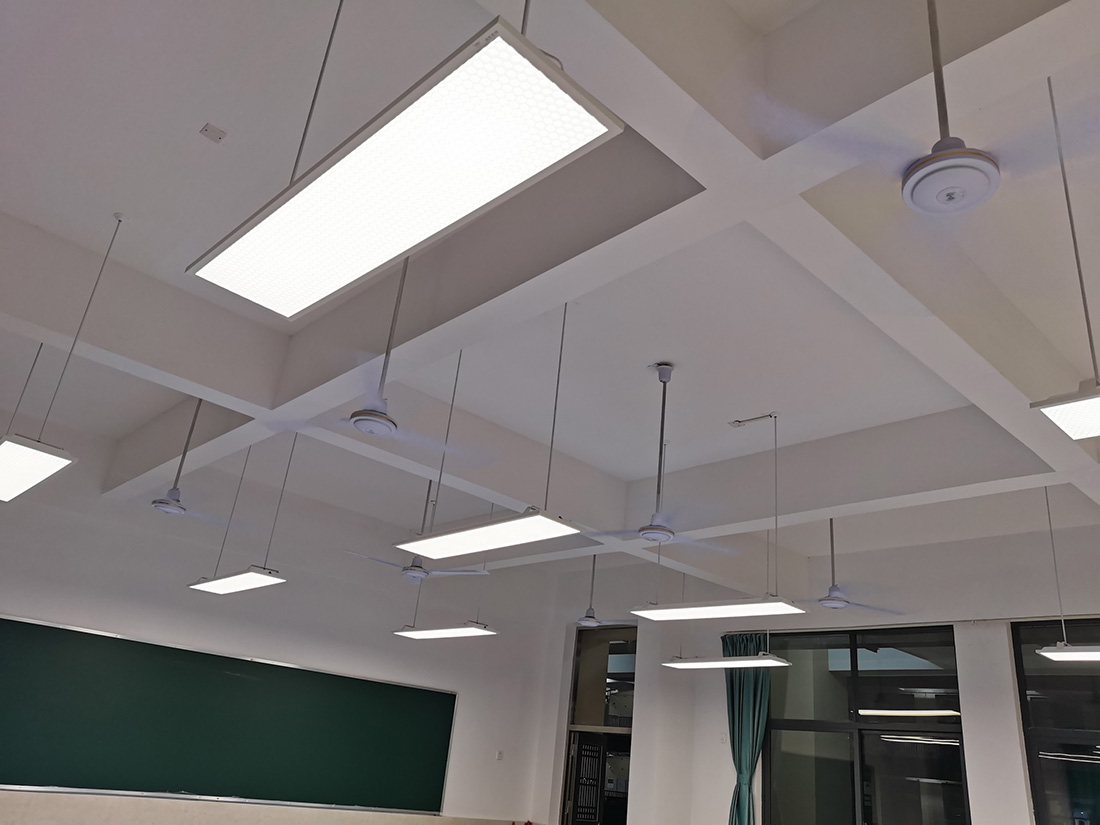Substandard lighting conditions in classrooms are a common problem around the world. Poor lighting causes eye fatigue to pupils and hinders concentration. The ideal solution to classroom lighting comes from LED technology, which is energy-efficient, eco-friendly, adjustable, and provides optimal results in terms of light distribution, glare and color accuracy – while also taking natural sunlight into account. Good solutions are always based on the classroom activities undertaken by the students. Well-lit classrooms can be achieved with products developed and manufactured in Hungary, and the energy savings they bring about can cover the cost of their installation.
Visual comfort beyond the standards
The Standards Institution mandates that the minimum illuminance level in classrooms should be 500 lux. (Lux is the unit of luminous flux spread over a given area of a surface such as a school desk or a blackboard. It is not to be confused with the lumen, the unit of luminous flux emitted by a light source, a value displayed on lamp packaging.)
According to the engineers, compliance with the standards is only the beginning, and steps should be taken to achieve complete visual comfort beyond the mandated 500 lux.
Lighting should always accommodate the visual needs of the users, so planning should not be based on the size of the room only, but also on the activities undertaken in it. Failing to do so will cause discomfort to the students. They could develop eye fatigue, miss important pieces of information, and their concentration can suffer, which, in the long run, might even affect their learning performance.

Factors to be considered when planning classroom lighting
Glare: for classrooms, the standard UGR (Unified Glare Rating) value is 19. It can be higher on corridors or changing rooms but should be lower in rooms used for light-sensitive tasks, such as technical drawing. The wider the lamp’s spread is, the worse the glare rating.
Uniformity: unfortunately, achieving the mandated illuminance of 500 lux doesn’t tell the whole story. On paper, you can fulfill this target by measuring 1000 lux in one corner of the classroom and zero in another explains József Bozsik. Ideally, however, the minimum illumination at any point of the room is at least 60 or 70 percent of the maximum. Natural light should also be taken into account. Bright sunlight can illuminate the textbooks of students sitting by the window by as much as 2000 lux. The moment they look up to the blackboard, lit by a comparatively dim 500 lux, they will experience distracting glare.
Colour accuracy: the colour rendering index (CRI) measures the ability of a light source to reveal the true colors of objects. Natural sunlight has a value of 100%. Classrooms should have a CRI of 80%, except for classrooms used for drawing, where it should be 90%.
Direct and indirect light: ideal lighting takes into consideration the fraction of the light that is emitted towards and reflected by the ceiling. If dark ceilings are avoided, fewer areas will be cast in shadow, and it will be easier for students to recognize faces or markings on the blackboard.
So, what does ideal classroom lighting look like?
LED: For Tungsram’s illumination engineer, the only satisfying answer is the one that offers the latest technology. For five years, he has recommended LED to every school he worked with. It’s energy-efficient, it doesn’t flicker, and it’s capable of achieving the aforementioned qualities. However, the luminaires themselves must be replaced, not just the fluorescent tubes within them. Installing new LED tubes to old, obsolete luminaires will only conserve the poor lighting conditions. Energy savings could still be achieved this way, but the quality of lighting will not improve, as these tubes were originally designed for large stores and storage rooms.
Beam angle: Classrooms should be fitted with multiple luminaires with small beam angles. The resulting indirect light will prevent glaring and the occurrence of distracting shadows that make drawing and concentration difficult. This way, optimal lighting will be maintained in the classroom even if desks are rearranged, which is necessary for certain learning activities.
Controllable solution: Luminaries are usually installed along the long edges of classrooms, parallel to the windows. In this case, József Bozsik suggests incorporating the so-called DALI control unit (Digital Addressable Lighting Interface). Paired with a light sensor, the flux will decrease on the luminaires closer to the windows in case of bright sunlight and increase farther from the windows. Furthermore, predefined „lighting templates” can be created and set by the press of a button – for instance, a darker template ideal for projecting videos and a lighter one tailored for work at the desk or the blackboard.


Shades: artificial shades, such as shutters or blinds should be provided to ensure an even light distribution across the classroom even in glittering sunshine, suggests Tungsram’s illumination engineer.
A self-financing solution
You might think that while modernizing the lighting in your school might indeed be beneficial, it is too expensive. Good news! Upgrading to LED can be financed by the energy savings of the new lighting solutions. In the ESCO financing model, the price is almost entirely covered by energy savings with little or no initial investment necessary.
Different factors to consider for gyms
In gyms, the minimum illuminance level is only 300 lux, somewhat lower than in classrooms. However, the luminaires can be hit by balls, so sturdier products must be installed, or at least they should be encased in the protective grating. Gyms often have glossy floors, which reflect the light emitted by older gas-discharge lamps. To prevent distracting reflections, newer gym floors are made from plastic or are finished with a matte lacquer. An alternative solution could be a dimming light diffuser for LED lamps or a so-called asymmetric floodlight.

Post time: Mar-20-2021




